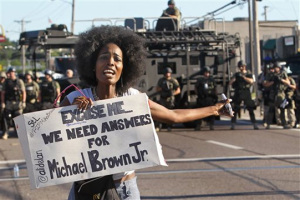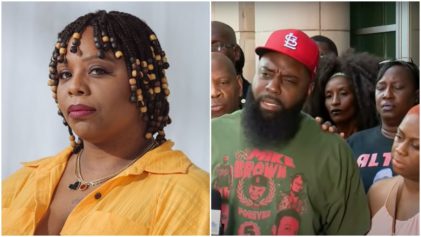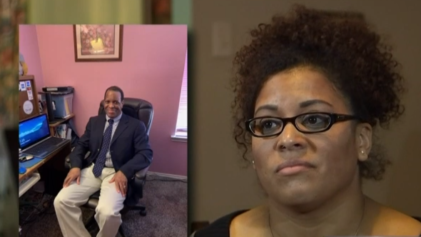The perception of police forces across the country changed drastically in the 20th century but perhaps the scariest thing about the images of racist, sexist, violent officers aggressively patrolling urban communities is the fact that they seem to be an embodiment of America’s current democracy.
Protests across the nation have criticized police officers for their excessive use of force, lack of efficient training and recruiting processes, militarized responses to peaceful protesters and overall presence of policing that seems to target people of color.
But is the police force simply a product of the very society that surrounds it?
During a time when race relations in America were already poor, countless unarmed Black citizens have lost their lives at the hands of police officers.
Many of these murders have taken place in neighborhoods that were considered to be “high crime” areas by law enforcement officials.
These neighborhoods, which are typically predominantly Black neighborhoods, are policed far more aggressively than other neighborhoods and are subjected to policing tactics like stop and frisk.
These policies have been proven to target people of color and essentially encourage police officers to make quick decisions about who is and who is not a dangerous criminal—a decision that is often made based on skin color.
Some activists have suggested better recruiting and training policies that prevent incompetent officers from joining the force while also teaching officers how to diffuse situations without using deadly force.
For well-funded police agencies in affluent neighborhoods, such improvements to recruiting and training processes are feasible but not exactly necessary.
These neighborhoods are incredibly low crime and policing efforts are mainly focused on just making residents feel safe.
Some say policing here is more about public relations matters than actual police work.
In low-income neighborhoods with poorly funded agencies, the picture is much different.
Agencies in these neighborhoods can’t afford to take possible recruits through the same lengthy and demanding process that other departments might use. They simply don’t have the money or additional resources.
This leads to many incompetent officers in the streets with deadly weapons and not a sufficient amount of training on how and when to use these weapons.
The division has essentially created a country with two very different types of police departments. But that only seems fitting for a country that has also been accused of creating two very different Americas—one for whites and one for people of color.
Tensions between the Black community and police have been approaching a boiling point over the past 50 years and the protests that followed the killing of unarmed Black teen Michael Brown in Ferguson, Missouri, seemed to be the final straw.
Images of police officers in armored vehicles that resembled tanks and aiming sniper rifles at peaceful protesters then sparked a discussion about another serious change that has impacted thousands of police departments in recent years.
The militarization of police has become a hot topic recently but the problem has been growing for years.
The fine line between police officers and military personnel began to blur rather quickly in the 1980s.
Around this time police forces began acquiring military equipment with no military training.
After the terrorist attacks of 9/11 in 2001, Homeland Security and the Department of Defense began giving extra funding to certain agencies. This ultimately led to a spike in military-style weaponry and SWAT teams.
With policy rhetoric that initiated a “war on drugs,” “war on crime” and “war on terror,” officers suited up for just that—a war.
And these were the types of wars that, not surprisingly, placed another target on the backs of people of color.
America’s own obsession with guns only made matters worse.
America has the highest rate of gun ownership among Western countries, the highest rate for murder by guns and the largest military apparatus in the world.
A country with that description should only be expected to produce an overly aggressive police force that responds to peaceful protests with snipers and mini tanks.
In the past eight years alone, police departments across the country have purchased more than 93,000 machine guns and more than 400 armored vehicles from the Pentagon.
Even the digital age has made an impact on police forces in recent years and proved that not all the recent changes to law enforcement have been negative ones.
As we enter the age of technology and constantly incorporate more digital means of communication into our daily lives, law enforcement followed suit.
Police departments have utilized many more cameras and other tech-driven means for surveillance.
The Chicago Police Department alone has access to more than 17,000 cameras including 4,000 in the airport and public schools.
There has also been a new wave of citizens reporting crimes through apps and mobile devices or doing their best to record injustices as they happen.

It creates the idea that there is always a watchful eye nearby and that we, as citizens, have become empowered watchdogs in our communities. It’s a role that could be much more difficult without digital aids.
Police forces have certainly evolved over the past half a century and many citizens aren’t very happy with what they see.
As George Washington University’s Frederick Lemieux wrote in an article for The Conversation, “The state of our police system, in other words, for good or for ill is an accurate proxy measure of the state of our democracy.”
Perhaps the only thing more frightening than being patrolled by the police forces of today is considering that perhaps they are merely a reflection of what America has really become.



